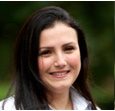Link to Pubmed [PMID] – 20159032
Biochimie 2010 May;92(5):425-44
STAT1 belongs to the STAT family of transcription factors, which comprises seven factors: STAT1, STAT2, STAT3, STAT4, STAT5A, STAT5B and STAT6. STAT1 is a 91 kDa protein originally identified as the mediator of the cellular response to interferon (IFN) alpha, and thereafter found to be a major component of the cellular response to IFNgamma. STAT1 is, in fact, involved in the response to several cytokines and to growth factors. It is activated by cytokine receptors via kinases of the JAK family. STAT1 becomes phosphorylated and forms a dimer which enters the nucleus and triggers the transcription of its targets. Although not lethal at birth, selective gene deletion of STAT1 in mice leads to rapid death from severe infections, demonstrating its major role in the response to pathogens. Similarly, in humans who do not express STAT1, there is a lack of resistance to pathogens leading to premature death. This indicates a key, non-redundant function of STAT1 in the defence against pathogens. Thus, to successfully infect organisms, bacterial, viral or parasitic pathogens must overcome the activity of STAT1, and almost all the steps of this pathway can be blocked or inhibited by proteins produced in infected cells. Interestingly, some pathogens, like the oncogenic Epstein-Barr virus, have evolved a strategy which uses STAT1 activation.

